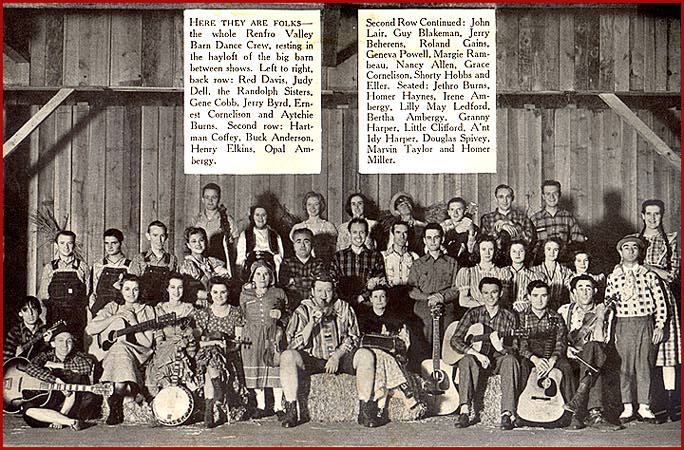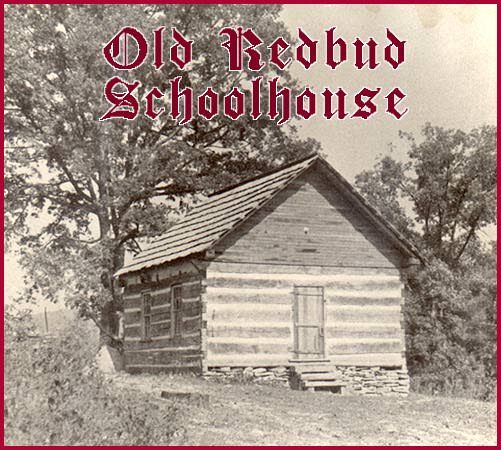The area was named so by John Lair, after the area's first settlers, John and Lula Renfro.
Lair also named the creek after them - "Renfo Creek" which flows throughout the
whole valley. The folks there loved their little green valley and were happy others did as well.
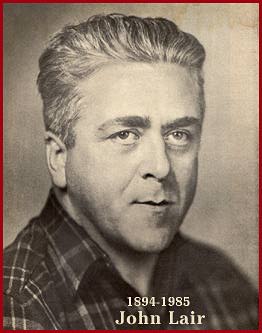 The first broadcast of the Renfro Valley Barn Dance was from the Cincinnati Music Hall
on Saturday night, October 9, 1937, over radio station WLW. After a record year at the Music Hall
it was moved to Memorial Auditorium, Dayton, Ohio, for another year of highly successful operation
and on November 4, 1939 it took up permanent quarters in the big barn in Renfro Valley built
expressly for that purpose.
The first broadcast of the Renfro Valley Barn Dance was from the Cincinnati Music Hall
on Saturday night, October 9, 1937, over radio station WLW. After a record year at the Music Hall
it was moved to Memorial Auditorium, Dayton, Ohio, for another year of highly successful operation
and on November 4, 1939 it took up permanent quarters in the big barn in Renfro Valley built
expressly for that purpose.
For the actual beginning of the idea which later developed into this famous presentation,
we must go back to the time when John Lair was growing up on the old homestead at the junction
of "Big" and "Little" Renfro. Though not talented in a musical way himself, John was more or
less the patron saint of such as scraped upon the fiddle or thumped upon the 5-string banjo and
early organized a string band of neighborhood boys who gathered in secret to escape the
attention of his Grandfather, Judge Jerome Burke Lair, a typical Southern Gentleman of the old
school in appearance, deportment and convictions, but with an abhorrence of string music and
musicians almost Puritanical in its intensity. He judged all men by the stern maxim "There's no
good in a man who plays the fiddle or parts his hair in the middle." To tell the truth, in those
pre-radio days, the future of any boy who preferred fiddle to hoeing corn did appear slightly
cloudy, to say the least.
Being "mixed up with a string band" had the inevitable result of storing John's memory with
never-to-be-forgotten scenes in the Staverson barn loft, the Redbud Schoolhouse and many private
homes where the bright-eyed boys and rosy-cheeked girls of the neighborhood met on snowy winter
nights to play "Four Hands Up to Rouser," "Wars of Germany," and Skip-to-M'Lou to the merry
strains of fiddle, guitar and banjo.
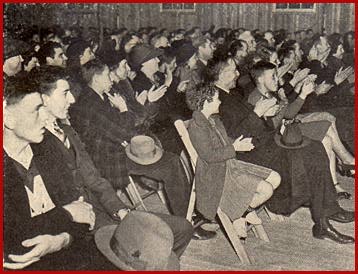 In due process of time along came the World War to break up the little parties and social
gatherings up and down Renfro Creek, After the Armistice most of the boys came back, but things had
changed in Renfro Valley. The younger generation was fast getting away from such "backwoods"
diversion and play-parties, bean stringings, quilting parties and the like were done for.
In due process of time along came the World War to break up the little parties and social
gatherings up and down Renfro Creek, After the Armistice most of the boys came back, but things had
changed in Renfro Valley. The younger generation was fast getting away from such "backwoods"
diversion and play-parties, bean stringings, quilting parties and the like were done for.
Soon after John's return from the war his father passed on, leaving him with a big farm
to manage and a widowed mother to support. He had always dreamed of owning The Valley some day. His
two grandfathers had almost done it one time and it was his one great ambition to complete to job.
He wanted to rip up the weather-boarding of the houses up and down Renfro to reveal the beauty
of the old log walls. He wanted to remove most of the fences and let the land revert to
wilderness so the wild game of any earlier day would came back to the cliffs and rocky ridges
that rimmed the valley and make it a spot where future generations would come for a glimpse
of the Pioneer America that was.
Not much use for a farm boy with no money to dream such dreams, though, so he tried to get
the Valley off his mind by going out to buck the world which lay beyond it. Following, briefly,
many trails he came at last to a radio job on station WLS. In eight years there he had gained
a lot of experience, continued heavily to the development of so-called hill-billy, then a
newcomer, and acquired the rather empty distinction of probably knowing more about American
Folk-Music and "home folks" radio than anyone else in the business. Still he wasn't satisfied.
The barn dance of program which he had helped to develop don;t ring true, somehow. It didn't
remind him enough of the real things as he had known it in the good old days in Renfro Valley.
He felt that what radio needed was a little realism - a little less "showmanship" and a little
more heart-felt sincerity. The old dream of doing something for Renfro Valley kept bobbing up
and he finally decided to cut loose from a good job and pleasant associations and try his hand at doing
some of the things more experienced radio men had always told him couldn't be done.
A young executive of a new advertising agency became interested. He had either the foresight or
the sporting blood to take a chance. A couple of sponsors were lined up and the big adventure
was on its way. Red Foley, one of the best of the many radio stars John Lair had developed for
radio, declared himself in on the deal. Slim Miller allowed he might as well go along, too. Lily May Ledford
was encouraged to build an all-girl fiddle band (first of its kind on the air) and Milly and
Dolly Good, who had been one of the sweetest harmony team on the air, were brought together again
and offered a job. Whitey Ford was picked up at a St. Louis radio station. Margaret Lillie and
Harry Mullins were teamed up as A'nt Idy and Little Clifford and the first program was soon
ready for the air.


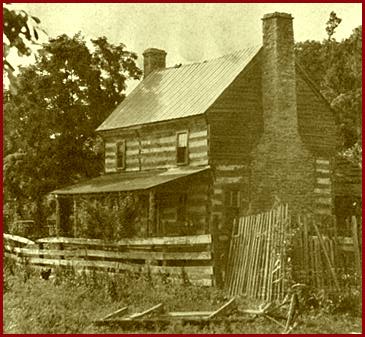


 The first broadcast of the Renfro Valley Barn Dance was from the Cincinnati Music Hall
on Saturday night, October 9, 1937, over radio station WLW. After a record year at the Music Hall
it was moved to Memorial Auditorium, Dayton, Ohio, for another year of highly successful operation
and on November 4, 1939 it took up permanent quarters in the big barn in Renfro Valley built
expressly for that purpose.
The first broadcast of the Renfro Valley Barn Dance was from the Cincinnati Music Hall
on Saturday night, October 9, 1937, over radio station WLW. After a record year at the Music Hall
it was moved to Memorial Auditorium, Dayton, Ohio, for another year of highly successful operation
and on November 4, 1939 it took up permanent quarters in the big barn in Renfro Valley built
expressly for that purpose. In due process of time along came the World War to break up the little parties and social
gatherings up and down Renfro Creek, After the Armistice most of the boys came back, but things had
changed in Renfro Valley. The younger generation was fast getting away from such "backwoods"
diversion and play-parties, bean stringings, quilting parties and the like were done for.
In due process of time along came the World War to break up the little parties and social
gatherings up and down Renfro Creek, After the Armistice most of the boys came back, but things had
changed in Renfro Valley. The younger generation was fast getting away from such "backwoods"
diversion and play-parties, bean stringings, quilting parties and the like were done for. 
